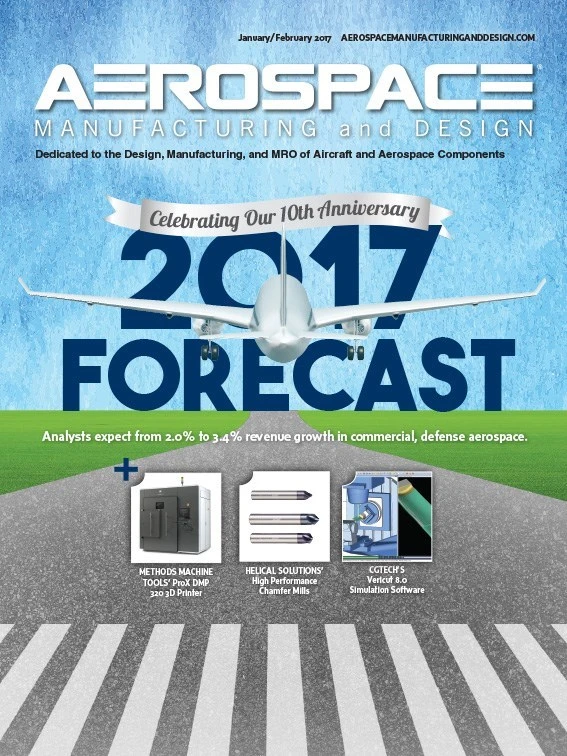
This winter marks Aerospace Manufacturing and Design’s 10th anniversary. In 2007, civil aviation was bouncing back from the aftermath of 9/11 and predictions were positive: “The aerospace and turbine industries are looking at good years ahead; people are flying more, and demand for new aircraft is growing.” The forecast was accurate – despite the global recession that dented economic growth from 2008 to 2010 and volatile oil prices. Where 10 years ago, Boeing analysts predicted a need for a global airline fleet of more than 35,000 airplanes by 2024, that projection has grown to more than 43,500 by 2036 – adding 700+ for each of the additional 12 years.
Ten years ago, airliner production in Asia was just talk – today final assembly lines in China are becoming a reality for Boeing and Airbus. Composite jetliners consisted of one model of Boeing 787 Dreamliner – now the type comes in three fuselage lengths with more than 500 examples already delivered. Airbus was just launching its own carbon-fiber-content wide-body A350 XWB – it’s now available in three variants, with more than 60 in revenue service.
The past decade defied cyclical upturns and downturns in aircraft demand. Jetliner deliveries rose almost steadily (just two dips in the chart) from $60 billion in 2007 to more than $100 billion in 2015 in constant dollars, part of what Teal Group Vice President of Analysis Richard Aboulafia describes as a 12-year (2004 to 2015) super cycle with compound annual growth rate of 9.2%.
What about the next decade? With the duopoly’s combined commercial order backlog of nearly 12,600 airplanes, there should be plenty of business for years to come – if suppliers can keep up with increased production rates.
Technologically, we should see the continuation of today’s trends: automation, composite construction, exotic materials, connectivity, and additive manufacturing (AM). Orders are already in the books for aircraft and jet engines that will use more carbon- fiber and ceramic-matrix composites and new aluminum and titanium alloys. AM is moving toward production parts in metal, spurred by advances pioneered by major aircraft and turbine engine producers. Large factories and small shops are leveraging machine data to be more efficient and reduce costs. And automation promises – or threatens – to have the most wide-ranging impact on aerospace manufacturing during the next decade.
Many tasks routinely involving manual labor will be done by robots. Large robots will perform composite fiber lay-up or rivet fuselage skins; and small, collaborative robots will help machinists move bulky parts or do repetitive finishing tasks. Automation may ease the looming shortage of trained machinists, since fewer people will be needed – or it will simply displace a shrinking cohort of skilled humans with machine-optimized methods. We’ve seen similar transformations in steel-making and automobile assembly.
Within the next 10 years, we may begin to realize designs of hybrid-electric air- liners – even if the electrification is limited to taxiway propulsion. Commercial spacecraft operators advertising satellite and rapid cargo delivery may become routine – along with sightseeing flights to the edge of space. But, more than likely, most commercial passengers will still be traveling in tube-and-wing, twin-engine airplanes, refinements of aircraft designs flying today. Is your vision similar? I welcome your comments. – Eric

Explore the January February 2017 Issue
Check out more from this issue and find your next story to read.
Latest from Aerospace Manufacturing and Design
- GE Aerospace secures Air Force engine contract
- Thomson Industries' online sizing and selection tool
- #53 - Manufacturing Matters - 2024 Leaders in Manufacturing Roundtable
- Join us for insights on one of the hottest topics in manufacturing!
- You can still register for March’s Manufacturing Lunch + Learn!
- Ohio creates Youngstown Innovation Hub for Aerospace and Defense
- Tormach’s Chip Conveyor Kit for the 1500MX CNC Mill
- How to Reduce First Article Inspection Creation Time by 70% to 90% with DISCUS Software






